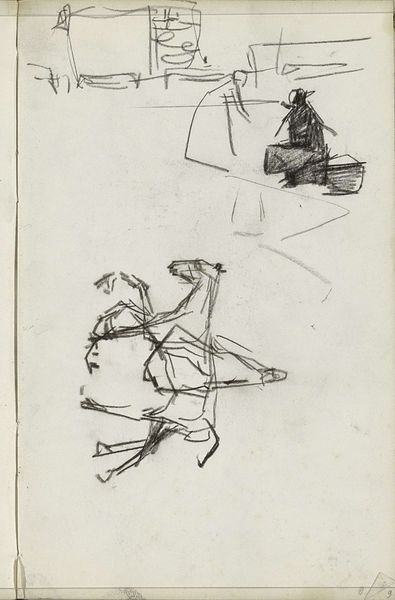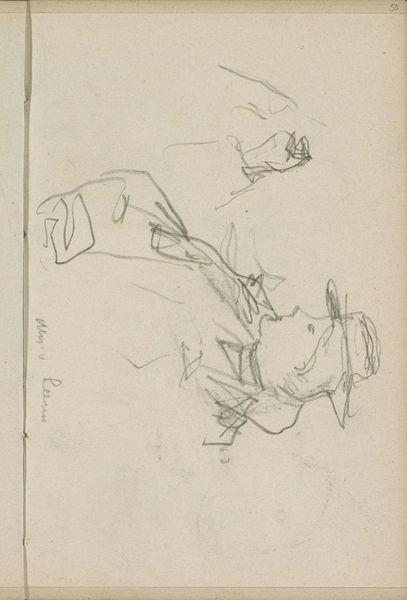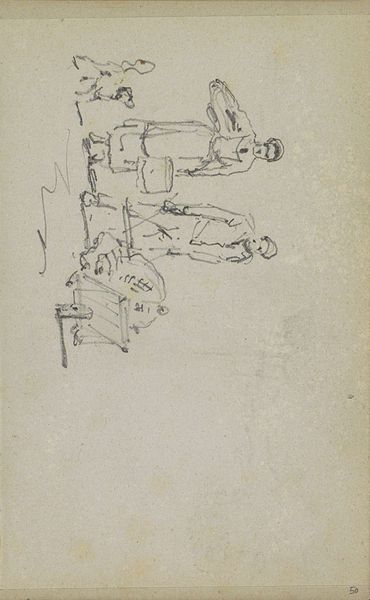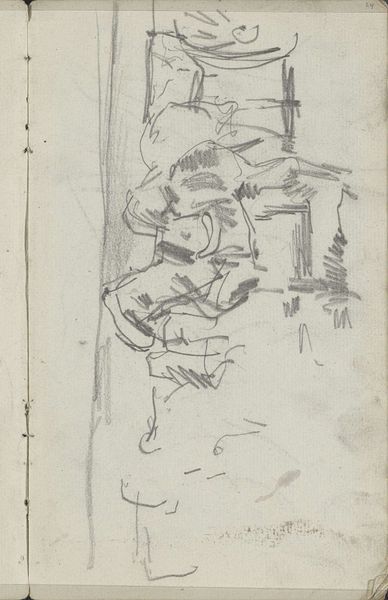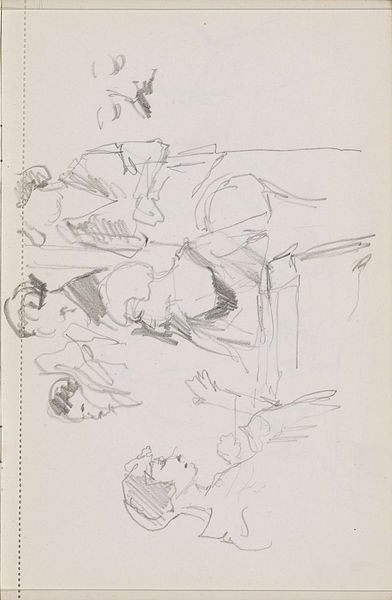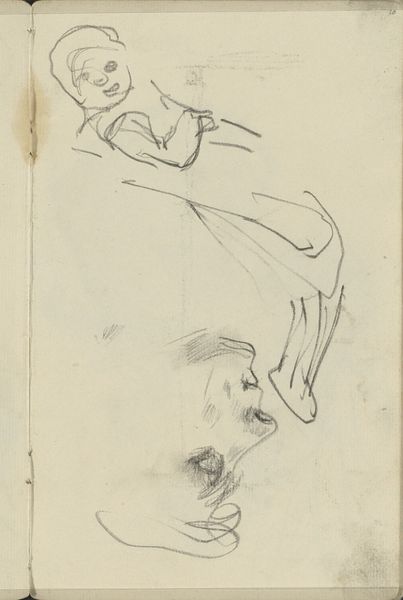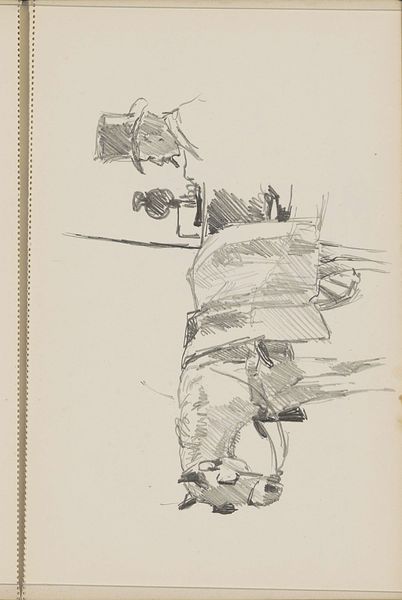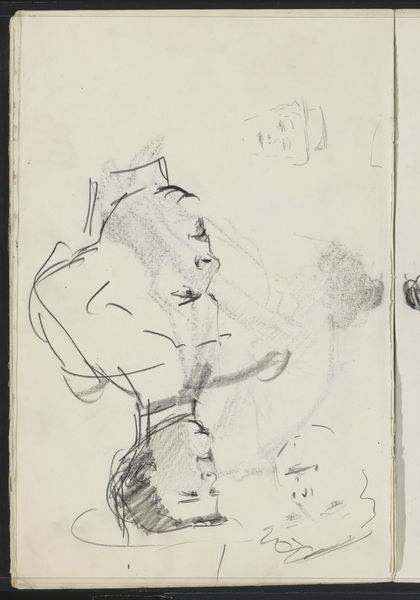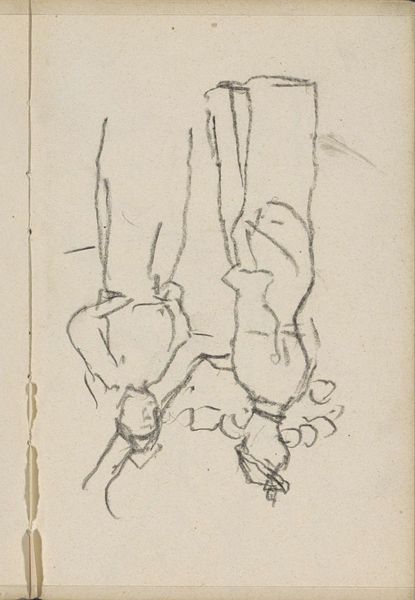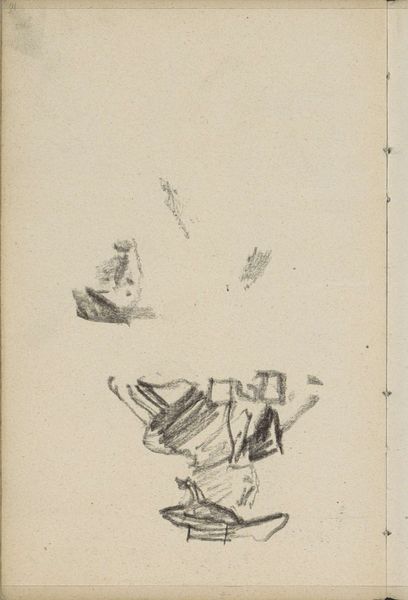
drawing, pencil
#
drawing
#
landscape
#
figuration
#
pencil
#
horse
#
realism
Copyright: Rijks Museum: Open Domain
Curator: What strikes you immediately about this study, ‘Paardenkoets,’ or 'Horse-drawn Carriage', by Cornelis Vreedenburgh? It’s believed to be from sometime between 1890 and 1946, rendered in pencil. Editor: A burst of energy, caught on paper! I feel the immediacy. Like the artist just grabbed a pencil and tried to pin down the fleeting image of this carriage. But it's incomplete. Like a memory. Curator: Absolutely. The quick, almost frantic lines certainly convey a sense of movement. The horse itself is captured from multiple angles, a jumble of legs and harnesses, but they evoke dynamic tension. The carriage almost feels like an afterthought. Why is it the artist puts so much more attention on the horse and not the ride? Editor: The horse is power, freedom, a connection to nature, untamed. The carriage...well, the carriage is civilization. A structure imposing limits on that wildness. That contrast itself tells a story, no? Humans wanting to dominate or channel nature to build structure or community? Curator: And Vreedenburgh chooses to explore that tension in pencil, such a simple and direct medium. There’s no attempt at idealizing the scene; instead, it feels very raw, observational, even. Editor: Exactly! It’s a refreshing break from formal equestrian portraits. It strips away all the grandeur, focusing instead on capturing the horse, which for Vreedenburgh feels like the real subject. Curator: Indeed. He focuses more on the anatomy. I'm moved that he seeks to define something as primal and free with just a few well-placed strokes. Editor: And it gets you thinking about the relationship between humans, animals and machines even back then, doesn't it? The pencil marks not only reveal the essence of the moment but the long story of man. Curator: In conclusion, I think it captures the essence of a bygone era where human connection with the animal world was ever more immediate. Editor: Leaving us to contemplate how our journeys have transformed—both physically and metaphorically. It almost inspires the questions what are our horses now?
Comments
No comments
Be the first to comment and join the conversation on the ultimate creative platform.


